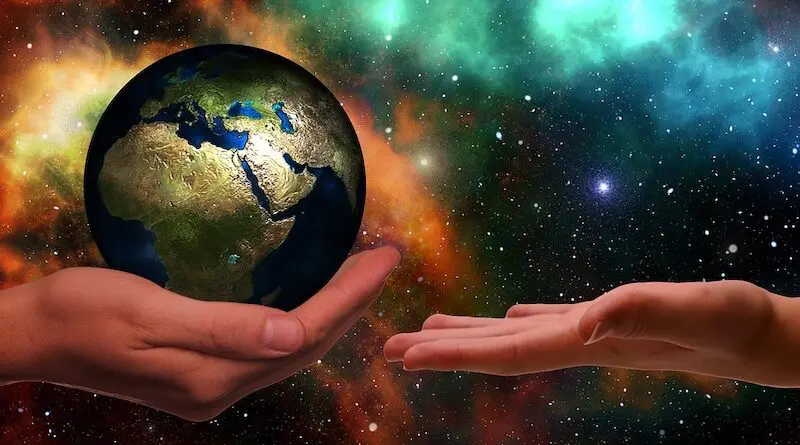Siddharth Anil Nair

A global green transition—our best bet to counter climate change—has been underway for about 10 years. Countries around the world have begun to leverage the power of technology with the objective of moving to more sustainable sources of energy and to cut emissions and limit global mean temperature increases. This is the good news.
The global green transition, however, is not without its challenges. The biggest of these are found in the massive disparities in access to two things: money and technology. It is the main reason why we won’t make the deadline that most of the international community committed to, which is cutting greenhouse gas (GHG) emissions by 45 per cent by 2030. In light of the hottest period on record and highest emissions in history, such targets have become completely unrealistic. These are formidable challenges—and they are worsened by the highly conflictual nature of the international system. The wars in Eastern Europe and West Asia are turning the rally for a greener world into a race.
Uneven Resource and Technology Access
A country’s ability to undertake a green transition depends entirely on whether it has the requisite access to money and technology. Many around the world have neither. Take Bangladesh, for example. In order for Dhaka to successfully implement initiatives under its National Action Plan, it needs US$ 230 billion over the next 17 years—as of now, it is able to muster only a few billion each year. Bangladesh desperately needs low-cost, investment-intensive capital to effectively mitigate or adapt to climate change. Another example is Nigeria. Abuja has access to many forms of renewable energy but is unable to exploit them. Poor technology transfer arrangements and developmental financing has stymied the Nigerian green transition.
Similar financial and technological challenges ail others, from the Philippines to Egypt to Bolivia and beyond. Recent studies show that developing countries will need upwards of a staggering US$ 6 trillion by 2030 for them to achieve their nationally determined contributions. Unfortunately, the international community has failed to mobilise the intended financial resources. Even the loss and damage fund recently approved at COP28 amounts to only US$ 700 million. This is in stark comparison to the US$ 525 billion in climate-related losses for just 55 countries over the past 20 years. These systemic challenges in a world of haves and have-nots are made worse by the fact that developing countries will continue to disproportionately bear the financial—and fatal—costs of climate change.
Compounding Impact of War
Adding fuel to the fire is the conflict-forward and fragmented state of our international system. The wars in Eastern Europe and West Asia have directly and indirectly threatened the global green transition. Other conflicts, in North Africa and South Asia, have done similar damage. Such geopolitical shocks have destroyed lives and livelihoods and hobbled national capacities for effective green transitions. By generating global security risks, these wars also contribute to widening the gap between the haves and have-nots.
Israel’s military response following the Hamas terror attack in October, for example, led to higher global gas prices and a slowdown of supply. This has impacted countries in South and Southeast Asia, who, with their growing energy demands, are looking to shift away from coal as part of their green transitions. It has also raised steep environmental and humanitarian costs in Gaza. In the absence of a durable ceasefire, Tel Aviv’s actions may also invite a broader conflict involving Iran and other actors. This worst-casescenario, if it emerges, will cause a doubling of fuel prices, higher inflation, and lower global growth.
Russia’s war in Ukraine, however, poses the toughest strategic challenge to the global green transition. Moscow plays an outsized role in the global supply of wheat, gas, and minerals. The invasion and consequent sanctions ignited a global food, fuel, and fertiliser crisis. As a result of the war, nearly 350 million people around the world were projected to be food insecure in 2022. More importantly, Russia is the world’s fourth largest GHG emitter and Moscow’s green choices matter greatly when it comes to the global net-zero target. The war has caused over US$ 56 billion in environmental damages in Ukraine, and in response to international sanctions, Moscow has warned it will oppose the transition away from fossil fuels. Worse still, Russia has been wastefully burning off millions of tonnes of fossil fuel every day.
The wars in Eastern Europe and West Asia have the potential to not only distract policy momentum on the global green transition but also de-prioritise it. Their resource and economic externalities have nurtured protectionism and “slowbalisation” in the world economy. These have intensified the financial and technological challenges faced by the global green transition: of access to lithium and hydrogen, concrete and steel, panels and turbines, etc. The US’ 2022 US$ 700+ billion Inflation Reduction Act (IRA) is one such example. The IRA has changed the shape of the global renewable and alternative energy market, forcing others in Europe, South America, and the Asia-Pacific to respond competitively and in kind.
Conclusion
Just as climate change has differentiated impacts, the green transition, too, will have differentiated outcomes. In today’s geopolitical environment, the green transition has regrettably become another arena of polarisation and competition. Systemic vulnerabilities separate us—and strategic divergences entrench these vulnerabilities further. There will be green winners and losers; i.e. those who meet the deadline and others who don’t. As climate hazards and disasters continue to change the geographic and demographic make-up of our world, so will the conditions for conflict and competition. If these wars continue, the green transition will no longer be the best bet for a freer, fairer, and safer world.
No comments:
Post a Comment